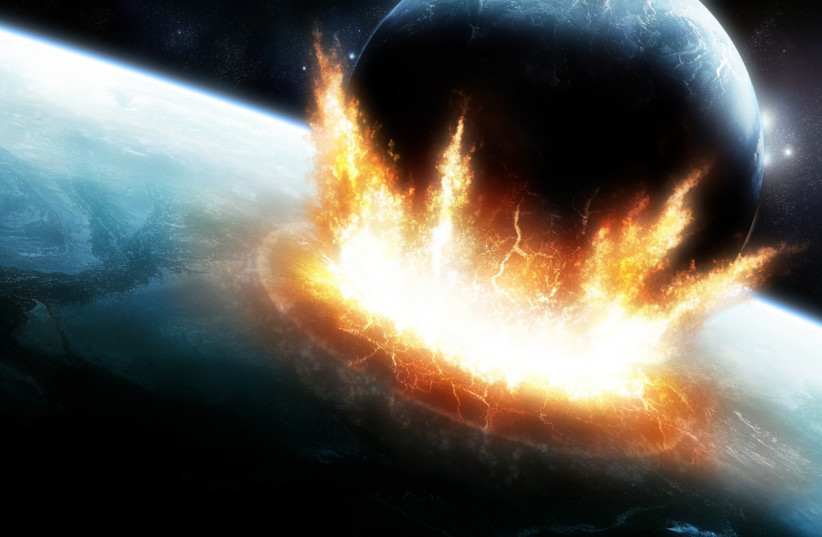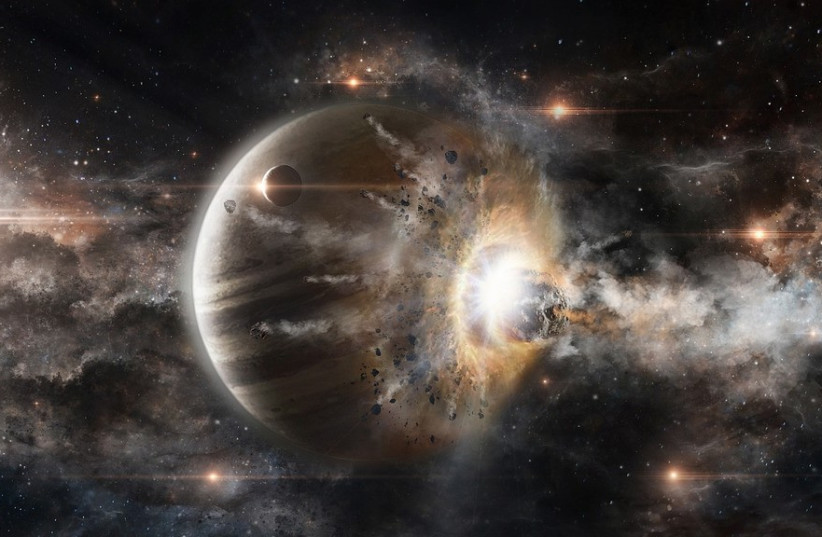A large asteroid comparable in size with the Washington Monument is heading in Earth's direction in late January, according to NASA's asteroid tracker. While it is unlikely to hit, an impact with an asteroid of this size could be far worse than most nuclear bombs.
Known as 2017 XC62, it is estimated to be between 84 meters and 190 meters in size and is set to fly past the Earth on January 24 at a speed of around 4.31 kilometers per second. However, it is unlikely to actually impact, as it is set to fly over seven million kilometers away from the Earth's surface. For comparison, that is about 18 times as much as the distance between the Earth and the Moon, which is around 384,000 kilometers.
This is fortunate, as the asteroid's maximum estimated size is a whopping 190 meters in diameter.
THE LAST time a large asteroid struck the planet was in 2013 in Russia, when a 17-meter asteroid exploded in the atmosphere.
But the last impact from an asteroid this big was in 1908 above the Podkamennaya Tunguska River in Russia, in what has now become known as the Tunguska event.
This asteroid is believed to have been around the same size as 2017 XC62, if not smaller.
When the asteroid exploded in the air several kilometers above the area, it produced a massive 12 megaton explosion, causing widespread destruction for thousands of kilometers. That would make it about 800 times more powerful than "Little Boy," the approximately 15-kiloton atomic bomb detonated during World War II over Hiroshima, and 600 times more than "Fat Man," the 20-kiloton one detonated over Nagasaki three days later.
The death toll from the Tunguska event was extremely low, however, with only around three people thought to have been killed in it, due to how remote and sparsely populated the region was. But the damage was still evident, with about 80 million trees completely flattened by winds of around 27 km per second. Tremors and airwaves were even felt as far away as Washington and Indonesia.
The few eyewitness accounts that do exist recounted the terrifying explosion, strong winds, and tremors.
"The sky split in two and fire appeared high and wide over the forest," recounted a man who was about 65 kilometers south of the explosion.
"The split in the sky grew larger, and the entire northern side was covered with fire," he said. "At that moment I became so hot that I couldn't bear it as if my shirt was on fire; from the northern side, where the fire was, came strong heat. I wanted to tear off my shirt and throw it down, but then the sky shut closed, and a strong thump sounded, and I was thrown a few meters. I lost my senses for a moment, but then my wife ran out and led me to the house.
"After that such noise came, as if rocks were falling or cannons were firing; the Earth shook, and when I was on the ground, I pressed my head down, fearing rocks would smash it," he said. "When the sky opened up, hot wind raced between the houses, like from cannons, which left traces in the ground like pathways, and it damaged some crops. Later we saw that many windows were shattered, and in the barn, a part of the iron lock snapped."
The Tunguska event is the largest in recorded history – though larger prehistoric ones happened – and is one of the largest explosions ever recorded, far more powerful than many nuclear bombs.
If 2017 XC62 hit, it could cause something similar.
According to research from the Davidson Institute of Science, the educational arm of Israel's Weizmann Institute of Science, an asteroid over 140 meters in diameter would release an amount of energy at least a thousand times greater than the energy released by the first atomic bomb if it impacted Earth. Something even larger – over 300 meters wide like the asteroid Apophis – could destroy an entire continent. An asteroid over a kilometer in width could trigger a worldwide cataclysm.
Thankfully, 2017 XC62 poses no real danger to Earth at this time, and NASA is confident the Earth is safe from an asteroid impact for the next century.


